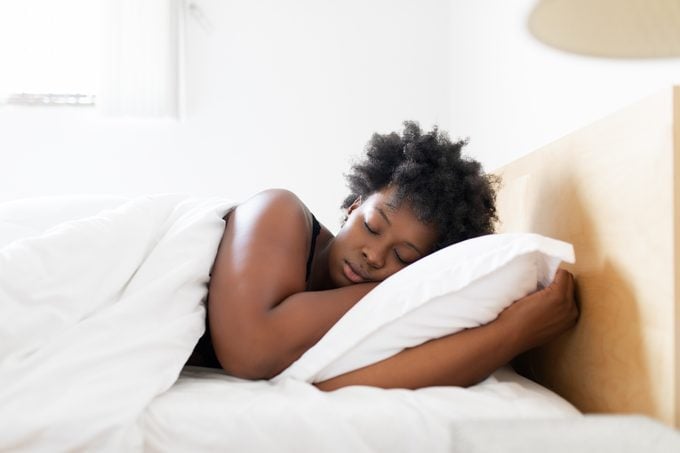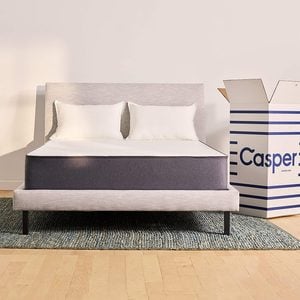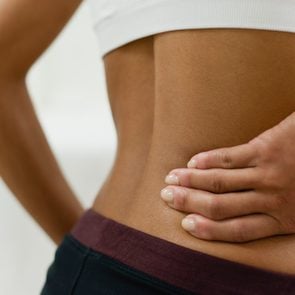Best Sleeping Position for Lower Back Pain
Updated: Apr. 18, 2024
Finding the best sleep positions for low back pain may do more than help you get a better night's rest, it may also help relieve your pain.
Why sleep position matters for people with lower back pain
Back pain is a thief—it can rob you of your all-important zzz’s. The pain/no-sleep cycle is a vicious one and all too common for the 31 million Americans who experience low back pain, according to the American Chiropractic Association.
Low back pain can be short-lived (lasting four to 12 weeks) or chronic (lasting 12 weeks or more), according to the Centers for Disease Control and Prevention. There are many possible causes, from fractures and muscle spasms to underlying diseases. And the pain may also travel with numbness or weakness if there is pressure on your nerves.
9 Signs Your Back Pain Is Actually an Emergency
Whatever the cause, low back pain can make it hard to get comfy at night. And there are times when your pain will wake you—especially if you don’t snooze in the best sleeping position for lower back pain.
This lack of sleep makes the pain worse, says sleep medicine expert Raj Dasgupta, MD, an assistant professor of clinical medicine at the Keck School of Medicine at the University of Southern California in Los Angeles and a spokesperson for the American Academy of Sleep Medicine.
“Your sleep is less restorative,” he says. “If you get poor sleep, the pain will feel worse.” Sleep loss may impair healing or affect your mood, heightening pain sensitivity, or disrupting chemicals in the brain that are known to be involved in pain.

The best sleeping position for lower back pain
Finding the best sleep position for lower back pain may help you get a better night’s rest and relieve your pain, Dr. Dasgupta says.
This takes some trial and error. In general, “it is best to try to keep the normal curvature of your back when you sleep,” says Yili Huang DO, director of the Pain Management Center at Northwell Health’s Phelps Hospital in Sleepy Hollow, New York.
That said, there is no one-size-fits-all sleeping position for lower back pain, adds physical therapist Jake Magel, PhD, a research assistant professor at the University of Utah in Salt Lake City. “The best sleeping position is one that feels most comfortable for you,” he says.
Here are the best sleeping positions for lower back pain.
Can’t Sleep? A New Study Found This Solution Was More Powerful Than Melatonin
Back sleeping and low back pain
When sleeping on your back, try placing a pillow under your knees or a small pillow under your lower back, Dr. Huang suggests. This will support the natural curve of your spine and reduce pressure on your lower back.
5 Subtle Signs Your Back Pain Means Something Serious, from a Spinal Surgeon
Side sleeping and low back pain
When sleeping on your side, try putting a pillow between your legs, Huang suggests. Keeping your knees bent will reduce pressure on your lower spine, too.
Stomach sleeping and low back pain
When sleeping on your stomach, try placing a pillow under your lower abdomen to keep your spine more aligned and reduce pressure, Huang says. Dr. Dasgupta cautions it may be the worst possible sleep position if you have low back pain. “You have gravity pushing down, and this is not the way the spine should be aligned,” he says.
Sleeping on the best mattress for you counts, too, Dr. Dasgupta adds, noting that this is also a personal choice. “Firm and soft are relative terms,” he says. Remember to replace your mattress regularly. “Don’t wait until the springs start showing.”
Treating your low back pain will also improve sleep.
What to Do When Walking Causes Lower Back Pain
Good sleep hygiene and low back pain
Good sleep hygiene also plays a role, Dr. Dasgupta says. Keeping your bedroom cool and dark will promote sleep, he says.
This means limiting caffeine after 2 p.m. as it can keep you awake. Drinking alcohol may help you fall asleep, but you won’t stay that way for long, he says. Avoid engaging in stressful activities before bed, such as paying bills or scrolling through the news headlines. Instead, adopt a relaxing pre-bedtime ritual, Dr. Dasgupta says.
Sleep apnea, which is marked by pauses in breathing while sleeping, can sometimes travel with low back pain, he notes. The two conditions do share some risk factors, namely obesity. Some of the pain medications that treat low back pain also slow down breathing, which can worsen sleep apnea symptoms, he adds.
Getting a diagnosis and treating sleep apnea or any underlying sleep disorder will have spillover benefits for low back pain, he says.
Back sleeping may be best for pain, but it can make sleep apnea worse, he cautions. “Gravity causes your jaw, tongue, and soft palate to drop back toward your throat, narrowing the airways and leading to blocked airflow and trouble breathing,” Dr. Dasgupta explains.
8 Causes of Lower Back Pain on Your Left or Right Side
The last word
Finding the best sleeping position for low back pain can help you get a better night’s sleep, resulting in spillover effects on your pain. Experiment with different positions and pillow placements to find one that works for you. And talk to your doctor to make sure you are doing everything possible to address the cause of your back pain.




